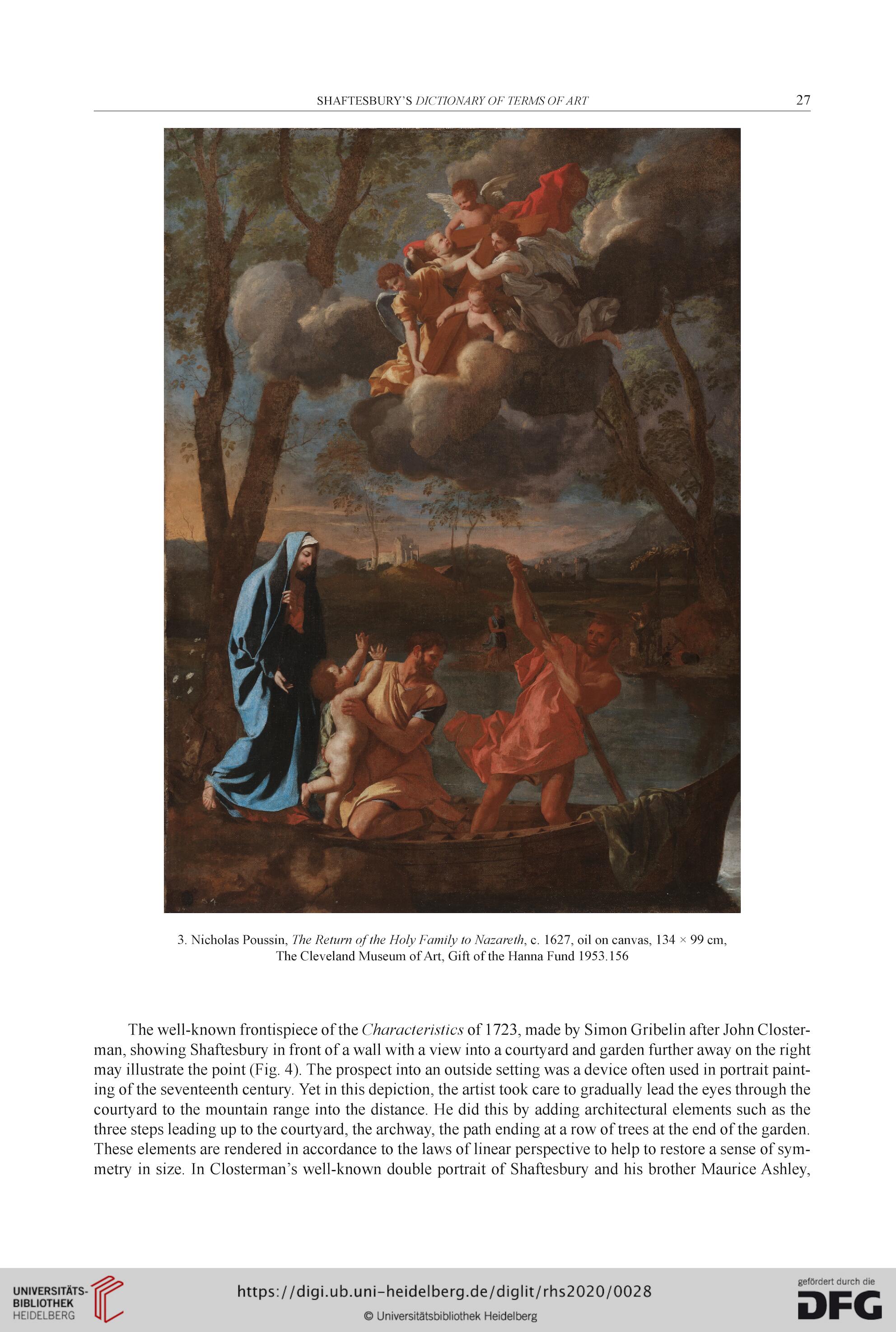SHAFTESBURY’S DICTIONARY OF TERMS OF ART
27
3. Nicholas Poussin, The Return of the Holy Family to Nazareth, c. 1627, oil on canvas, 134 x 99 cm,
The Cleveland Museum of Art, Gift of the Hanna Fund 1953.156
The well-known frontispiece of the Characteristics of 1723, made by Simon Gribelin after John Closter-
man, showing Shaftesbury in front of a wall with a view into a courtyard and garden further away on the right
may illustrate the point (Fig. 4). The prospect into an outside setting was a device often used in portrait paint-
ing of the seventeenth century. Yet in this depiction, the artist took care to gradually lead the eyes through the
courtyard to the mountain range into the distance. He did this by adding architectural elements such as the
three steps leading up to the courtyard, the archway, the path ending at a row of trees at the end of the garden.
These elements are rendered in accordance to the laws of linear perspective to help to restore a sense of sym-
metry in size. In Closterman’s well-known double portrait of Shaftesbury and his brother Maurice Ashley,
27
3. Nicholas Poussin, The Return of the Holy Family to Nazareth, c. 1627, oil on canvas, 134 x 99 cm,
The Cleveland Museum of Art, Gift of the Hanna Fund 1953.156
The well-known frontispiece of the Characteristics of 1723, made by Simon Gribelin after John Closter-
man, showing Shaftesbury in front of a wall with a view into a courtyard and garden further away on the right
may illustrate the point (Fig. 4). The prospect into an outside setting was a device often used in portrait paint-
ing of the seventeenth century. Yet in this depiction, the artist took care to gradually lead the eyes through the
courtyard to the mountain range into the distance. He did this by adding architectural elements such as the
three steps leading up to the courtyard, the archway, the path ending at a row of trees at the end of the garden.
These elements are rendered in accordance to the laws of linear perspective to help to restore a sense of sym-
metry in size. In Closterman’s well-known double portrait of Shaftesbury and his brother Maurice Ashley,




